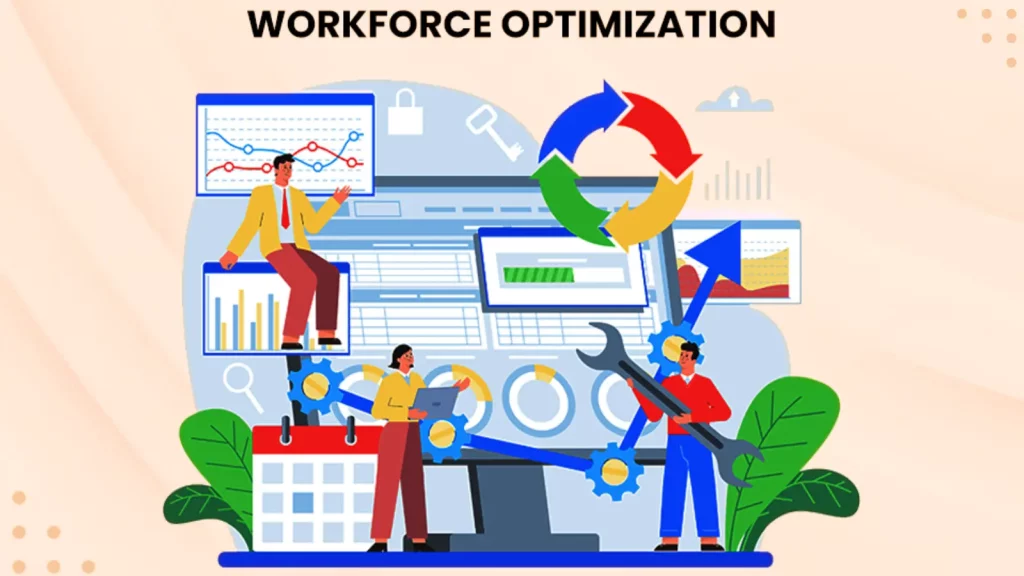The Evolution of Workforce Optimization in the Service Industry
The Evolution of Workforce Optimization in the Service Industry
Blog Article
Data-Driven Workforce Optimization for Strategic Advantage
In the current fiercely aggressive business landscape, developing a strategic edge is more critical than ever. One path to achieving that is through data-driven workforce optimization. By leveraging the huge levels of data now available, companies may fine-tune their workforce to be more effective, productive, and aligned with long-term organization goals. This approach isn't only for large enterprises; it's equally useful for small and medium-sized businesses striving to maximize their resources.
Knowledge Workforce Optimization
Workforce optimization requires using knowledge analytics to enhance the performance and output of employees. By analyzing numerous metrics such as for example time administration, performance degrees, and work satisfaction, businesses may identify places for improvement. This data-driven method permits more educated decision-making, ensuring that sources are given effectively and that personnel are put for success.
As an example, an organization would use employee efficiency knowledge to identify top performers and analyze what units them apart. This information can then be utilized to develop teaching programs that help different workers reach similar quantities of performance. The key is by using data to operate a vehicle constant development, as opposed to counting on gut feelings or outdated methods.

The Position of Data Analytics
Knowledge analytics plays a pivotal position in workforce optimization. By collecting and analyzing information from numerous resources, companies can get insights into employee performance, engagement, and overall productivity. This information can be used to produce step-by-step studies and visualizations that highlight developments and habits, making it simpler to identify parts for improvement.
For instance, by studying time-tracking data, a company may find that specific tasks are using more than expected. These details can then be properly used to streamline techniques or provide additional instruction to employees. Likewise, data on staff diamond might help identify facets that donate to job satisfaction, enabling companies to apply changes that increase well-being and reduce turnover.
Advantages of a Data-Driven Method
Adopting a data-driven method of workforce optimization offers numerous benefits. For one, it allows companies to produce more educated choices, lowering the danger of expensive mistakes. By basing conclusions on hard data rather than intuition, organizations can guarantee that they're assigning resources in the most truly effective way possible.
Still another gain is increased transparency. When workers understand that conclusions are increasingly being built based on data, they're prone to trust the process and feel confident inside their roles. This may cause to raised quantities of wedding and output, as workers feel appreciated and supported.
Finally, a data-driven method can help companies keep in front of the competition. By continuously monitoring and improving workforce efficiency, organizations can adjust to changing market situations and stay agile in the face of new challenges. This strategic advantage could be the huge difference between achievement and disappointment in the present fast-paced organization environment.
Realistic Tips for Implementing Workforce Optimization
To successfully apply workforce optimization , organizations require to start with an obvious plan. This requires placing certain objectives and determining the main element metrics which will be applied to evaluate success. Additionally it is vital that you include personnel in the act, as their input can offer important ideas and support ensure buy-in.

Next, businesses need to invest in the right tools and technologies. This may contain time-tracking pc software, performance management systems, and information analytics platforms. By developing these tools, businesses can collect and analyze information more effectively, providing a great basis for decision-making.
Ultimately, it's vital that you foster a culture of constant improvement. This implies frequently reviewing knowledge and creating adjustments as required to make sure that workforce optimization attempts are containing the required results. By staying determined to the process, companies may open the entire potential of their workforce and obtain a strategic advantage.
In conclusion, data-driven workforce optimization is a effective instrument for achieving proper success. By leveraging information analytics to improve employee efficiency and involvement, organizations can make more educated choices, increase productivity, and remain in front of the competition. For organizations looking to maximize their assets and get a aggressive side, adopting a data-driven approach is not merely an option—it is a necessity.
Report this page